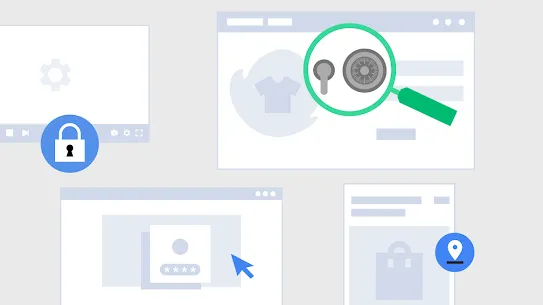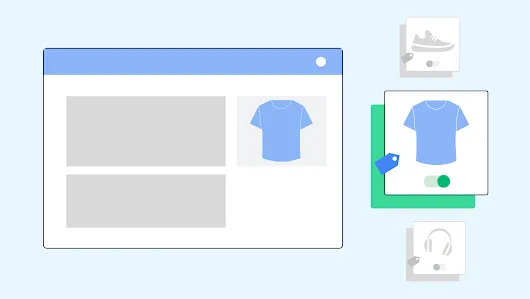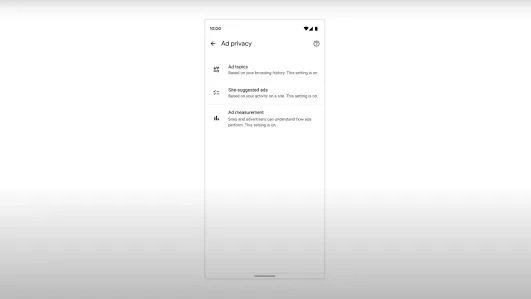
Privacy Sandbox for the Web reaches general availability
Today, we mark a major milestone for the Privacy Sandbox for the Web, reaching "general availability" on Chrome for the relevance and measurement APIs. This milestone is a significant step on the path towards a fundamentally more private web.
How We Got Here
We introduced the Privacy Sandbox initiative in 2019 to improve privacy across the web (and Android) while continuing to provide businesses with the tools they need to succeed. Since then, we've collaborated with a wide range of stakeholders – including publishers, developers, adtech providers, consumers, and more – to design and develop new solutions that can achieve this goal.
We’ve taken this approach because we believe it is vital to both improve privacy and preserve access to information, whether it’s news, a how-to-guide, or a fun video. Without viable privacy-preserving alternatives to third-party cookies, such as the Privacy Sandbox, we risk reducing access to information for all users, and incentivizing invasive tactics such as fingerprinting.

Link to Youtube Video (visible only when JS is disabled)
General availability of the Privacy Sandbox APIs means advertising providers and developers can now scale usage of these new technologies within their products and services, as these are now available for the majority of Chrome users.1
New User Controls
We've also rolled out new Ad privacy controls in Chrome that allow people to manage how the Privacy Sandbox technologies may be used to deliver the ads they see. These controls allow users to tailor their experience by customizing what ad topics they’re interested in, what relevance and measurement APIs they want enabled, and more.

Link to Youtube Video (visible only when JS is disabled)
You can view these controls by visiting Settings > Privacy and security > Ad privacy controls in Chrome, and can find additional information about the new ads privacy features on our Help Center.
The Benefits of Collaboration
We wouldn’t have been able to reach this milestone without collaboration across the industry, and we are grateful for all the stakeholders who have engaged with the technologies to date.
This is an important step towards improving privacy for the ads that help fund a free and open web, but the work doesn’t stop here.
Solution Integration and Effectiveness Testing
General availability means the Privacy Sandbox technologies are in a stable state, and ready for scaled use by advertising solutions to support key business use cases. Having reached this stage after extensive industry feedback, we don’t plan to make any significant changes to the API interfaces ahead of third-party cookie deprecation. Companies integrating the Privacy Sandbox APIs into their solutions can now scale their deployment and testing to assess readiness for the planned deprecation of third-party cookies in Chrome in the second half of 2024. This includes experiments to evaluate the effectiveness of the Privacy Sandbox, in compliance with our Commitments and in consultation with the UK’s Competition and Markets Authority (CMA), and specific testing groups facilitated by Chrome.
Starting in Q4 of 2023, we’ll enable the industry to bolster their testing efforts with the ability to simulate the deprecation of third-party cookies for a percentage of their users. Then, in Q1 of 2024, we’ll turn off third-party cookies for 1 percent of all Chrome users, further establishing the environments necessary for testing the effectiveness of the Privacy Sandbox APIs.
A Farewell to Third-Party Cookies
The countdown to the planned deprecation of third-party cookies is in full effect. We look forward to continuing to partner with the industry on this transition, including supporting the adoption of Privacy Sandbox APIs and evaluating their effectiveness through scaled testing.
1. We’ll expand general availability to 100 percent of users over the coming months, but are initially leaving ~3 percent of users unaffected by the change in order to ensure our ability to conduct adequate A/B testing for the change.
Read more
- Read a related article "Shipping the Privacy Sandbox relevance and measurement APIs" on Google for Developers Blog
- Find documentation on Google for Developers
- Read more about the proposals and APIs for the Web
- Watch a video and learn more on the Learning Hub
Explore more articles about: Privacy Sandbox for the Web, Announcements


